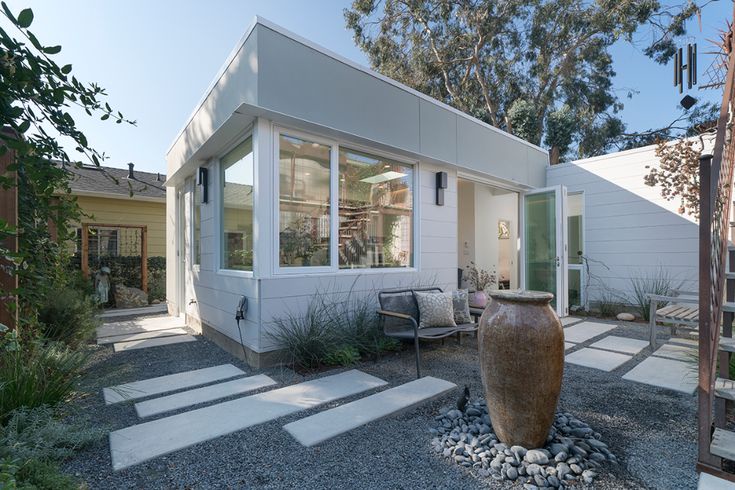The legal landscape surrounding Accessory Dwelling Units (ADUs) in California underwent significant changes commencing January 1, 2020. This has unlocked various opportunities for homeowners and investors within the state, a convenience yet to be replicated nationwide.
Historically, bureaucratic hurdles posed by local counties, municipalities, and Homeowners’ Associations (HOAs) made it challenging to secure approval for ADUs. These constraints led to a significant gap between the prevalence of ADUs in the US (1% of homes) and Vancouver, Canada, where 30% of homes have ADUs.
Given the state's ongoing commitment to augmenting the housing supply and the stark lack of available housing to meet the demand, the recent legislation ensures a streamlined approval process from the state, provided all necessary criteria are met within a maximum of 60 days.
Advantages of the Recent Legislation
Incorporating an ADU Bay Area within your property portfolio has been substantially simplified. The once stringent restrictions regarding size, parking, and owner-occupancy requirements have been relaxed. Simultaneously, the influence of HOAs has been curtailed.
Given the proximity of public transit within half a mile, parking spaces can be transformed into an ADU. The setback requirements have been standardized, too, reducing the demanded space from 40 feet to merely 4 feet from the rear and side and 10 feet from the front of the residence.
Understanding an ADU
Commonly referred to as ADUs or accessory dwelling units, these can also be called second units, granny flats, in-law units, or casitas. They represent secondary dwellings existing on a single parcel.
These units can be detached, stationed in a side yard or backyard, or attached, like garage or basement conversions.
Single-family homes can now incorporate one detached ADU Bay Area and one junior ADU, transforming any single-family home into a 3-plex. Junior ADUs, however, have certain caveats, as they must be under 500 square feet and necessitate owner occupancy for rental.
For multifamily properties, you are allowed to construct two detached ADUs.
To meet the requisite criteria, a standard ADU should possess its entrance, living space, bedroom, bathroom, and cooking facilities. Junior ADUs can share a bathroom with the primary residence. Additionally, separate utility metering and addressing for the ADU are allowed.
Essentials to Consider When Procuring an ADU
Scrutinize the city and its ADU friendliness. A generous lot size or backyard (typically 5000-6000 square feet) is necessary for supporting an ADU. The flatness of the background is crucial, as any slope or grading could escalate costs. Obstacles like trees, power lines, and easements add to the expenditure. Power lines in the front line can be a significant hurdle to the project.
Cost Implications of an ADU
A Tier 1 property, devoid of any of the abovementioned issues and with 14-15 feet of side access, can be cost-effective. Foundations can range from $15,000-30,000, with site-specific electrical panels adding $5,000-10,000.
Utilities trenching can increase costs. However, providers like Habitat ADU Bay Area include 50 feet into their baseline trenching. But the final costs cannot be determined until permit submission. The optimal strategy is to build the ADU as far away from the primary residence as feasible.
A Tier 4 property with any of the problematic issues can add $5,000-10,000 per item. Pricing models and overruns can vary significantly across companies.
Costs of Stick-Built ADU
A ground-up, stick-built ADU can be costly, requiring $5,000-15,000 for an architect, a similar amount for a structural engineer, and about $10,000-20,000 for permits. Therefore, stick-built ADUs can cost around $500,000-700,000 for a standard 800 square feet ADU.
Be wary of low quotations, as many components may not be included. Thoroughly checking every item is recommended to prevent overruns.
Since existing foundations and walls are leveraged for garage or basement conversions, costs are considerably lower.
Costs of Modular ADU
Modular ADUs, offering upfront certainty, could cost around $350,000-400,000 for a detached unit. However, delays can be expected given the involvement of a general contractor managing site work and construction with subcontractors.
Client Profile
ADU clients can be classified into two categories. The first category includes those who intend to use it for personal or familial needs, such as accommodating an older family member, children returning home, or creating a detached home office.
The second category encompasses investors aiming for a high-yield rental stream at a discount. With ADUs, they can expect 16-17% cash on cash return.
Is an ADU Worth It?
ADUs can offer a range of advantages. They provide additional space for family members and hold the potential for a profitable yield for investors if held for 5-7 years or longer.
From a wider perspective, they also provide community benefits by reducing commute times and offering housing to medium or lower-income tenants. Thus, ADUs represent a socially and environmentally conscious investment choice.


No comments yet